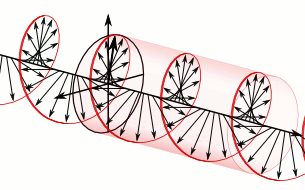Tizaveh: dressup
When the Bible speaks of clothing, it evokes many stories. For Adam and Eve it is a story of self awareness. Clothing covered their embarrassment. Previously, their embarrassment had been covered by ignorance.. Fantasy had been superimposed on the innocent biological process. They had to cover themselves so that they could get on with other aspects of their lives.
In the story of Noah, clothes are the sources of dignity. They cover Noah's aging body. Intoxication caused Noah to cast off his clothes, to devalue his dignity. It is better not to look
In the story of Yaakov and Esau, clothes are an element of identity , They distinguish individuals and mark divergence
Yosef has two clothing experiences. The coat that his father makes for him, the kitonet pasim, sets him apart for honor, it is the original bespoke suit. The gemarah (Kethuboth 19b) mentions a pasim note. This is a note that does not reflect an actual debt, bur is a device intended to demonstrate the feigned wealth of the bearer.
The ketonet padim was removed from Yosef by his brothers, sprinkled with goat blood , and brought to their father as proof of Yosef's ill fate. The sacred garments of the High Cohen are also sprinkled with blood in their sanctification. There is a hint of Cain and Abel here. The conflict of Cain and Abel involved their sacrificial rite.
The wife of Potifar also strips Yosef of his clothing. The Levite high Priest strips Josph's descendants of a position that might have been theirs, per the blessings of Jacob.
The high Cohen's clothes are intended to confer honor and grandeur, lichovod ulitiferes. In the second temple, we have a true case of "clothes make the man" It was by dressing in these clothes that the high priest was consecrated ( meruba bigadim)
There is a tradition that Alexander the Great bowed to the High Cohen because of his apparel. Alexander had seen this style in his dreams.
And so , we get Jews in the shmateh business.
In the story of Noah, clothes are the sources of dignity. They cover Noah's aging body. Intoxication caused Noah to cast off his clothes, to devalue his dignity. It is better not to look
In the story of Yaakov and Esau, clothes are an element of identity , They distinguish individuals and mark divergence
Yosef has two clothing experiences. The coat that his father makes for him, the kitonet pasim, sets him apart for honor, it is the original bespoke suit. The gemarah (Kethuboth 19b) mentions a pasim note. This is a note that does not reflect an actual debt, bur is a device intended to demonstrate the feigned wealth of the bearer.
The ketonet padim was removed from Yosef by his brothers, sprinkled with goat blood , and brought to their father as proof of Yosef's ill fate. The sacred garments of the High Cohen are also sprinkled with blood in their sanctification. There is a hint of Cain and Abel here. The conflict of Cain and Abel involved their sacrificial rite.
The wife of Potifar also strips Yosef of his clothing. The Levite high Priest strips Josph's descendants of a position that might have been theirs, per the blessings of Jacob.
The high Cohen's clothes are intended to confer honor and grandeur, lichovod ulitiferes. In the second temple, we have a true case of "clothes make the man" It was by dressing in these clothes that the high priest was consecrated ( meruba bigadim)
There is a tradition that Alexander the Great bowed to the High Cohen because of his apparel. Alexander had seen this style in his dreams.
And so , we get Jews in the shmateh business.


